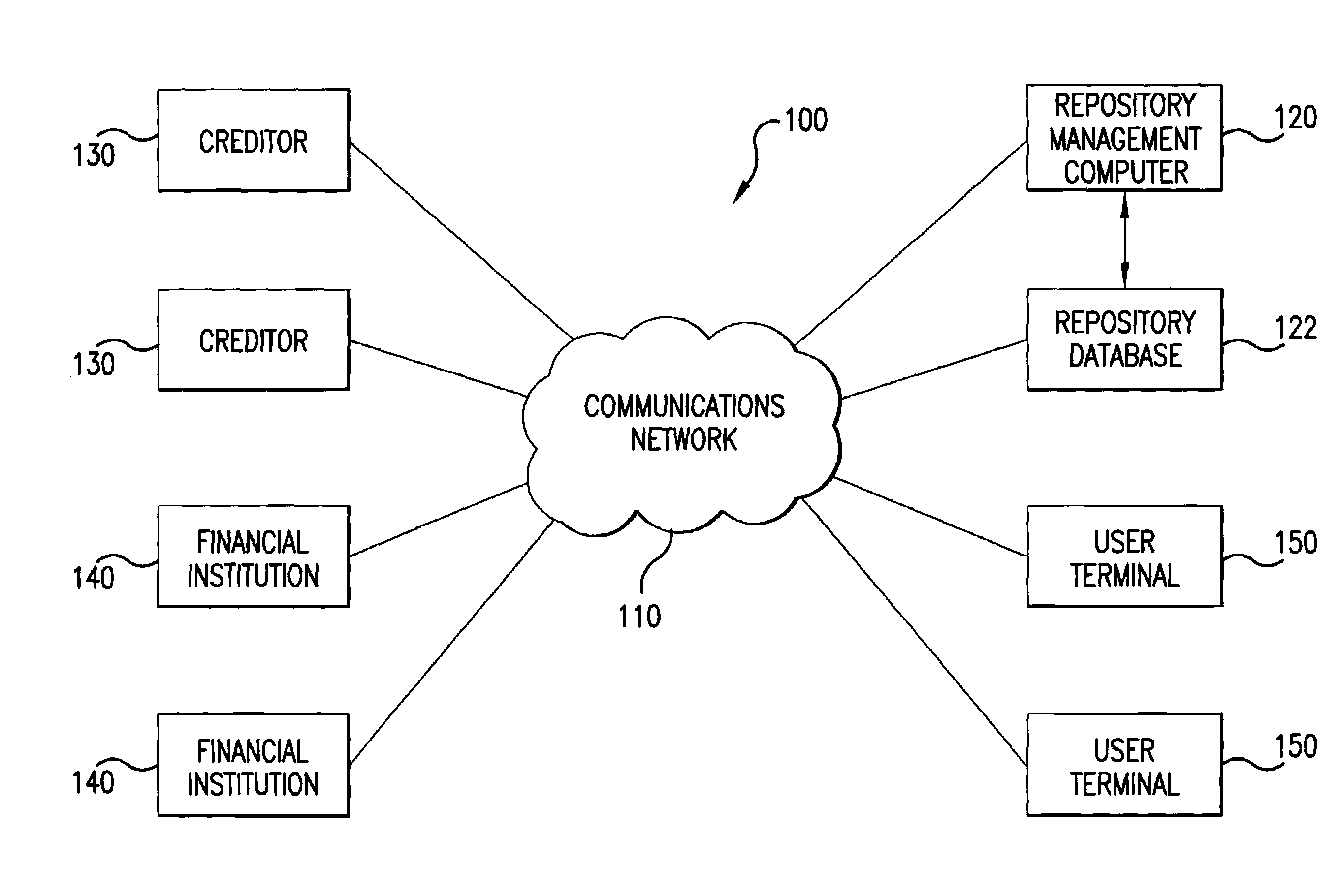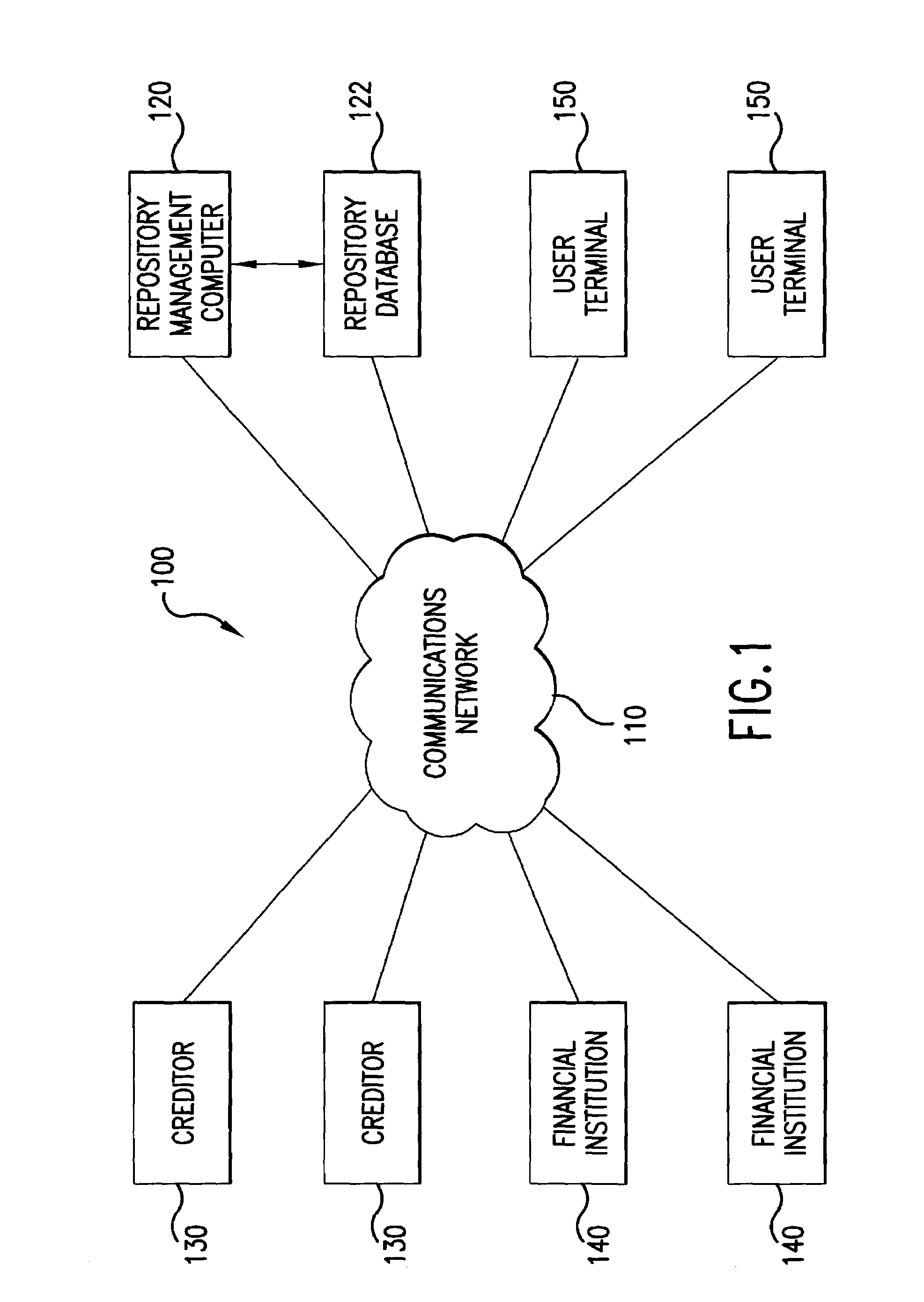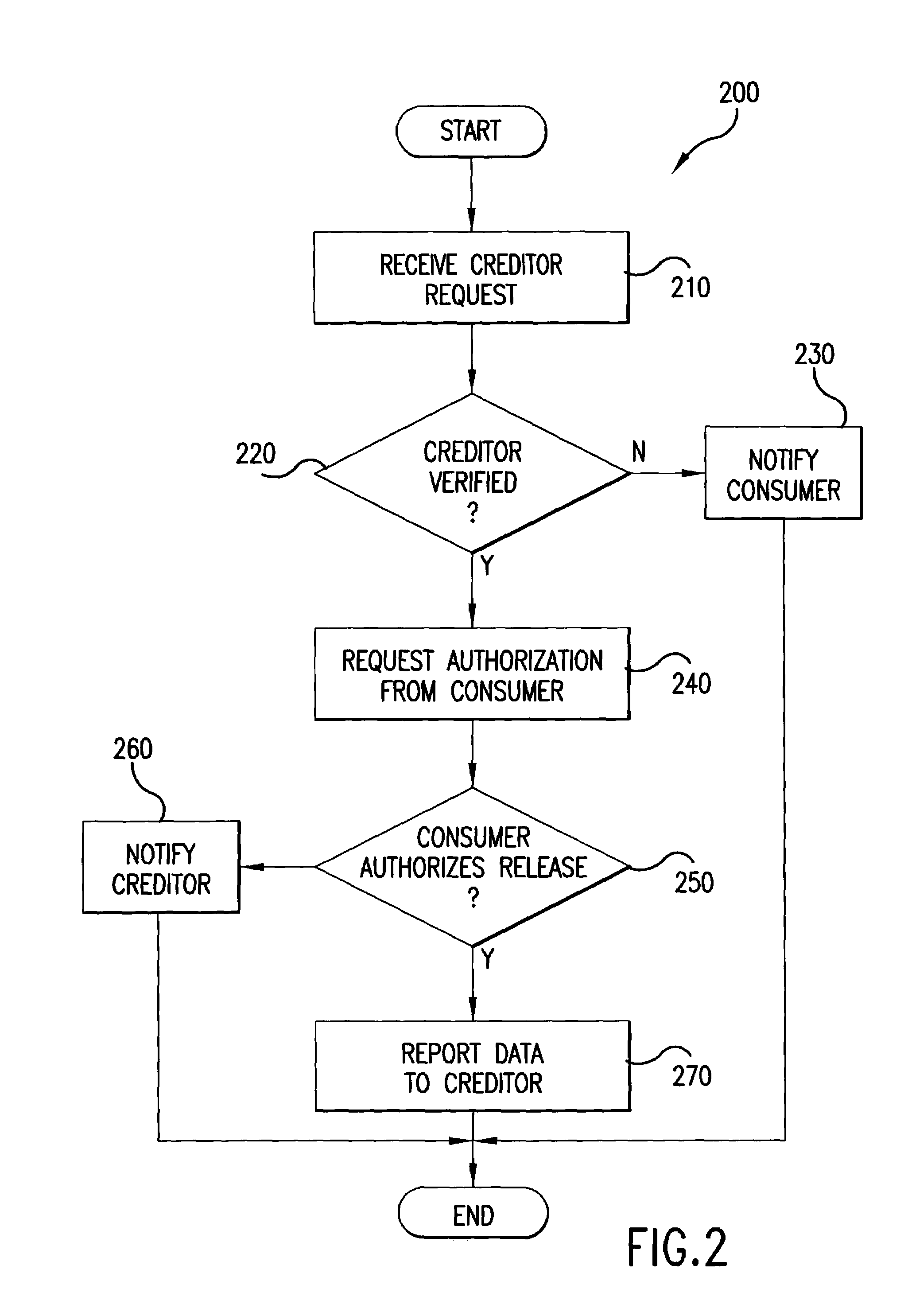Preferred credit information data collection method
a credit information and data collection technology, applied in the field of consumer credit reporting, can solve the problems of not reporting, the current housing credit application process for both residential leases and mortgages presents a daunting problem for consumers with rehabilitated credit, and the “traditional” method used to establish creditworthiness presents distinct unfair disadvantages, so as to achieve the effect of lowering the barriers to credi
- Summary
- Abstract
- Description
- Claims
- Application Information
AI Technical Summary
Benefits of technology
Problems solved by technology
Method used
Image
Examples
Embodiment Construction
[0017]The present invention will be discussed with reference to preferred embodiments of methods and systems for collecting and distributing credit payment data. Specific details, such as types of data collected and dispute resolution mechanisms, are set forth in order to provide a thorough understanding of the present invention. The preferred embodiments discussed herein should not be understood to limit the invention. Furthermore, for ease of understanding, certain method steps are delineated as separate steps; however, these steps should not be construed as necessarily distinct nor order dependent in their performance.
[0018]An exemplary system 100 according to the present invention is illustrated in FIG. 1. The system 100 includes a repository management computer 120 connected to a repository database 122. The repository database 122 holds credit payment data. Preferably, in the context of residential housing credit, the data includes the following records:[0019]A Consumer Person...
PUM
 Login to View More
Login to View More Abstract
Description
Claims
Application Information
 Login to View More
Login to View More - R&D
- Intellectual Property
- Life Sciences
- Materials
- Tech Scout
- Unparalleled Data Quality
- Higher Quality Content
- 60% Fewer Hallucinations
Browse by: Latest US Patents, China's latest patents, Technical Efficacy Thesaurus, Application Domain, Technology Topic, Popular Technical Reports.
© 2025 PatSnap. All rights reserved.Legal|Privacy policy|Modern Slavery Act Transparency Statement|Sitemap|About US| Contact US: help@patsnap.com



